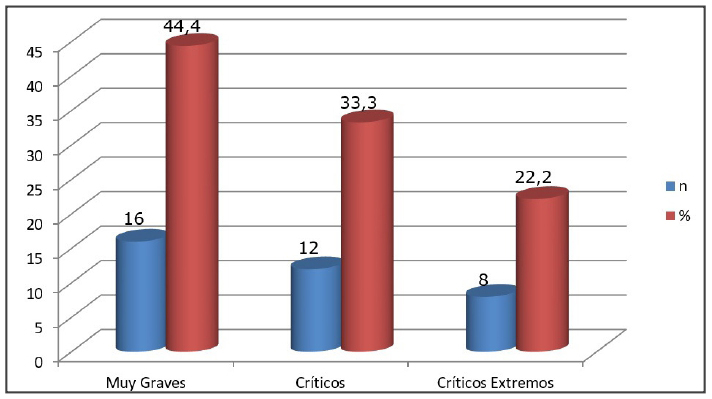Evaluation of Neutrophil-to Lymphocyte Ratio in severely burned patients
DOI:
https://doi.org/10.18004/anales/2024.057.02.59Keywords:
Burns, Inflammation, Lymphocytes, NeutrophilsAbstract
Introduction: Burns are devastating injuries associated with high morbidity and mortality. A disruption of the immune system is developed, affecting the function of neutrophils and lymphocytes, first defensing line against pathogens. In order to evaluate the association between the Neutrophil to Lymphocyte Ratio, and the prognosis of the burn injurie, the investigation was performed. Methods: A descriptive, longitudinal, prospective investigation was developed at the Burn Unit of Calixto García Hospital, from January 2022nd to December 2022nd. All severely burned patients admitted, with ages between 19 and 60 years old, and less than 24 hours from the onset of the accident were included. Patients suffering from chronic conditions were excluded. To determinate the levels of Neutrophil to Lymphocyte Rates, blood samples were taken at the first 72 hours after injury and during the 6th day. A relationship between the levels of Neutrophil to Lymphocyte Ratio, and the prognosis of the trauma was established. Of a total
of 134 patients admitted, 36th were included. Results: Male patients were the majority. Fire the main etiological agent, and accidents the first production mode. High levels of Neutrophil to Lymphocyte Ratio were detected since the first 72 hours after trauma, and stayed high during the 6th day of evolution. Patients with poorest life prognosis, showed higher levels of Neutrophil to Lymphocyte Ratio. Conclusion: A direct relationship was found between the levels of Neutrophil- to Lymphocyte Ratio and the severity of the burn injury, and the survival rate.
Downloads
Metrics






